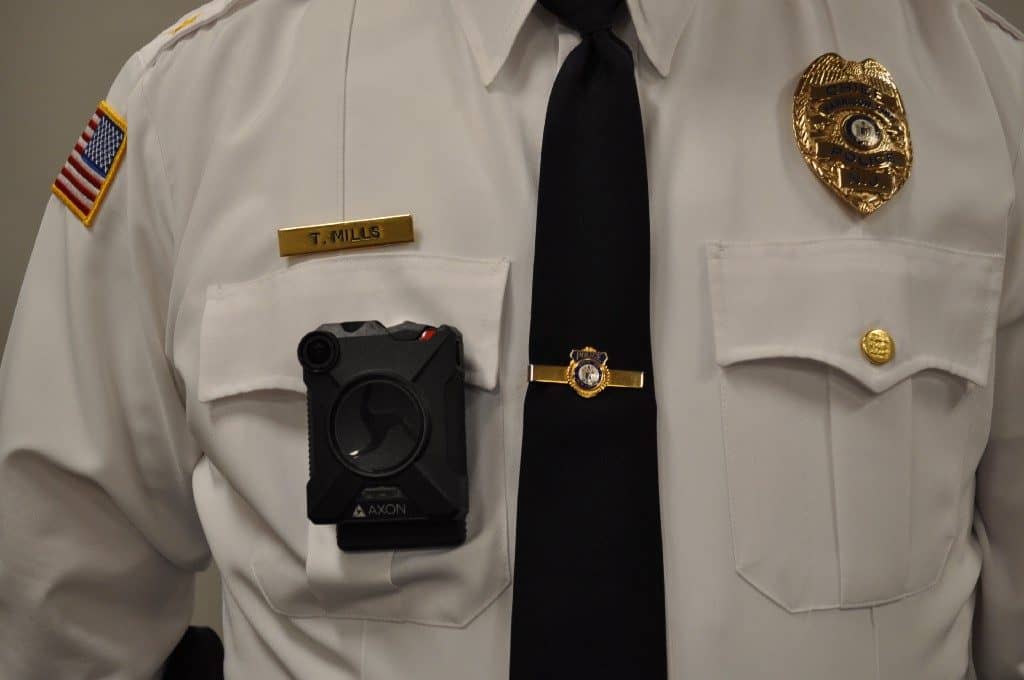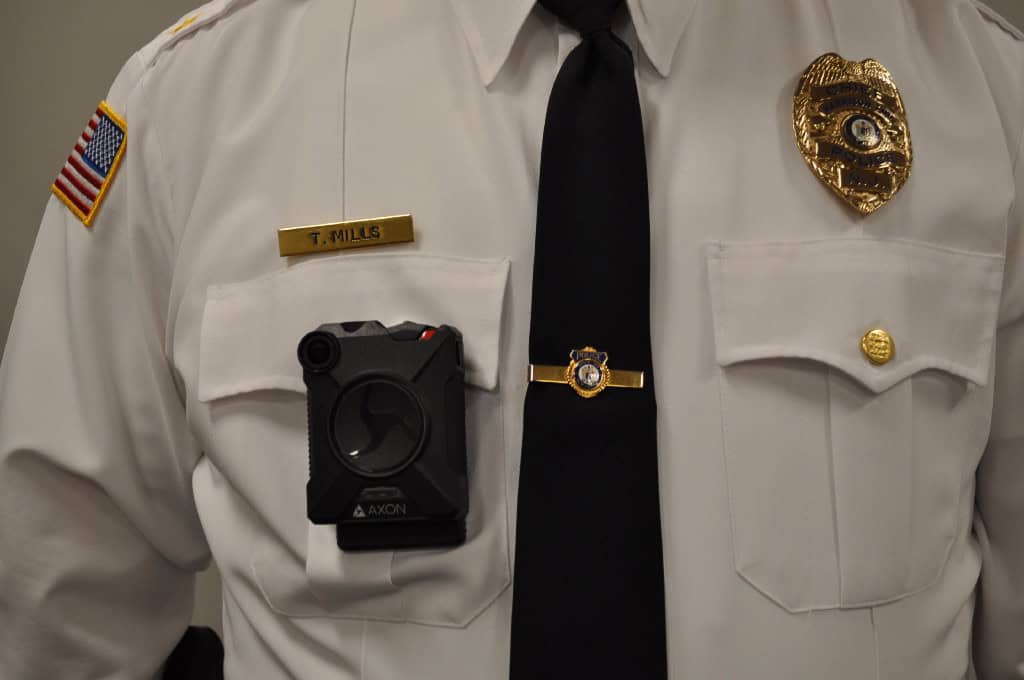
The police department will set aside funds for the purchase of cameras at the end of the year

Body cameras became part of the Harrison Township Police Department’s uniforms last January after the department accepted a free, one-year trial through a company called Axon, formally known as TASER International. The department received 25 cameras, cloud storage and transfers, docking stations and automatic software updates.
Police Chief Thomas Mills said there are multiple reasons the department engaged in the trial, “One was to capture the video of the interactions with our officers and the public,” he said. “This was done in an attempt to build stronger criminal cases by gathering more and better evidence. The video also allows us to review the interactions to see where we can improve as a department.”
The move is part of a national trend. In 2015, the U.S. Department of Justice, under the influence of President Obama, awarded $23.2 million to 73 local and tribal agencies in 32 states for the purchase of body-worn cameras. Harrison was not part of this funding program.
In January, in an interview with The Sun, Mills said, “We’re always looking to expand our capabilities, have better job performance and review different things to make sure we’re doing things correctly. … This is just another step in the evolution of being a more professional and proficient police department.”
Six months later, Mills said, “This is still our mindset. We have been able to quickly review the captured video after a complaint has been made against an officer. The incident can be evaluated by our internal process and disposed of much quicker with better and more accurate results.”
The cameras are visible on law officer uniforms and record most interactions with the public by the push of a button. Mills stated the cameras are not used in privacy situations dictated by the department’s policy.
In the beginning, it was the hope of the department that all parties involved in an incident would act appropriately knowing a surveillance device is present. Six months down the line, he said, “On numerous occasions the demeanor of a citizen during a police contact changes once they see or are advised that they are being recorded. Not always, but on some occasions, it has assisted in de-escalating certain situations”
The only downside the department sees is the cost. The cameras can range between $400 and $500, but Mills stated the storage and user agreements are a greater cost.
Detailing the devices more, Mills said, “The cameras do represent what the officer sees. They are set to record at the same setting as the human eye. This also includes night recordings. The context of the video as it relates to a call for service or an interaction with an individual is also important.”
He also stated the camera does not serve to replace good judgment “but acts as a tool to provide some basis of why a decision is made,” he said.
Neighboring Mantua Township is in the process of testing different body-worn cameras. The Mantua department received a $12,500 grant from the Division of Criminal Justice recently to assist with the purchase of the cameras and training materials.
Numbers gathered by the state Attorney General’s Office show that in 2016 approximately 200 of the nearly 500 police departments in the state began utilizing these devices.









